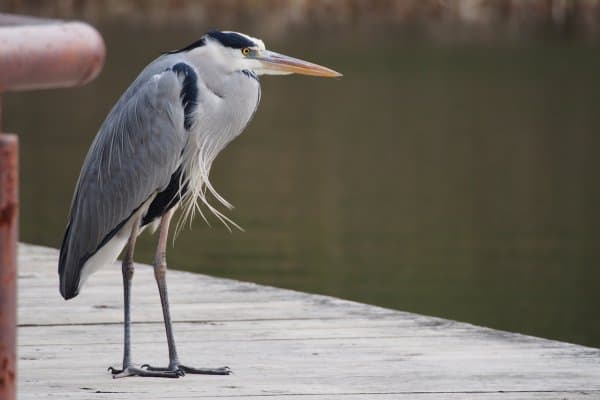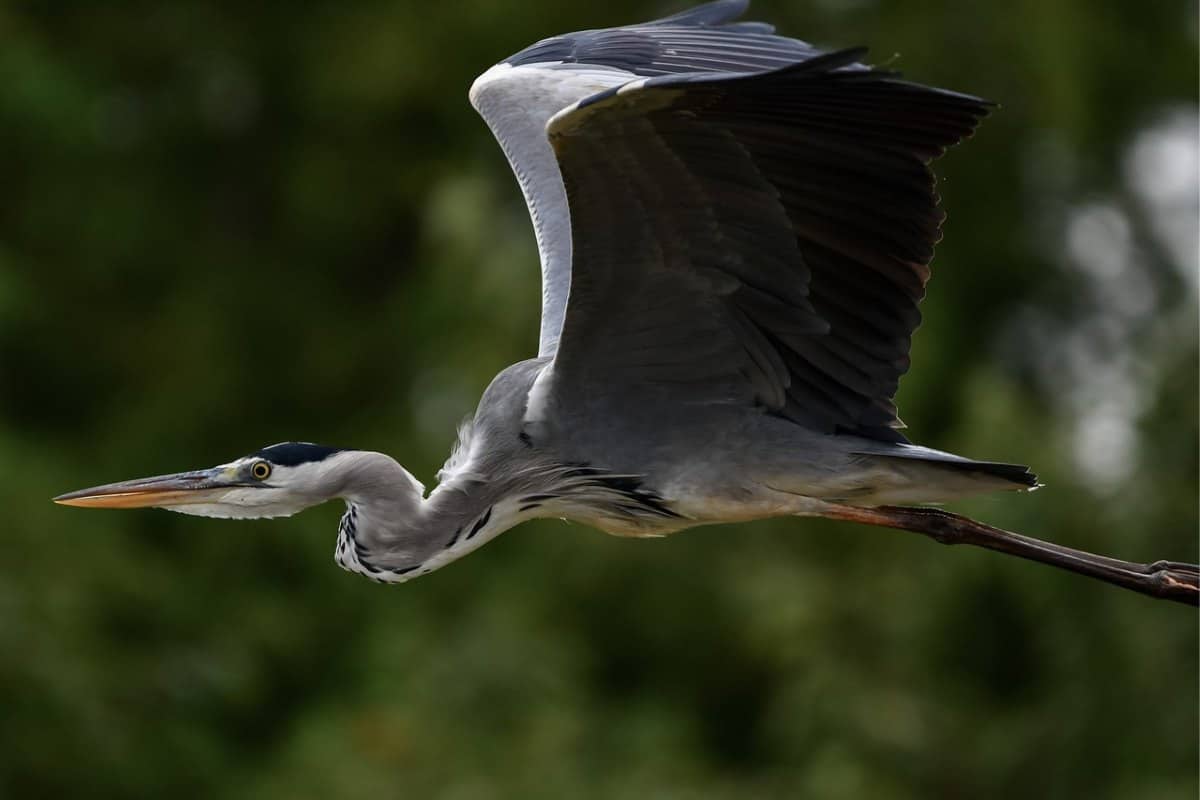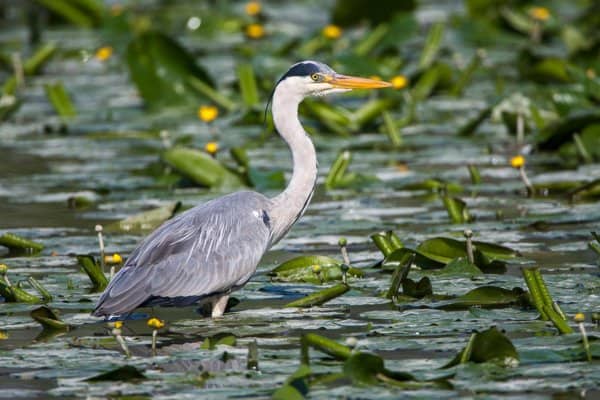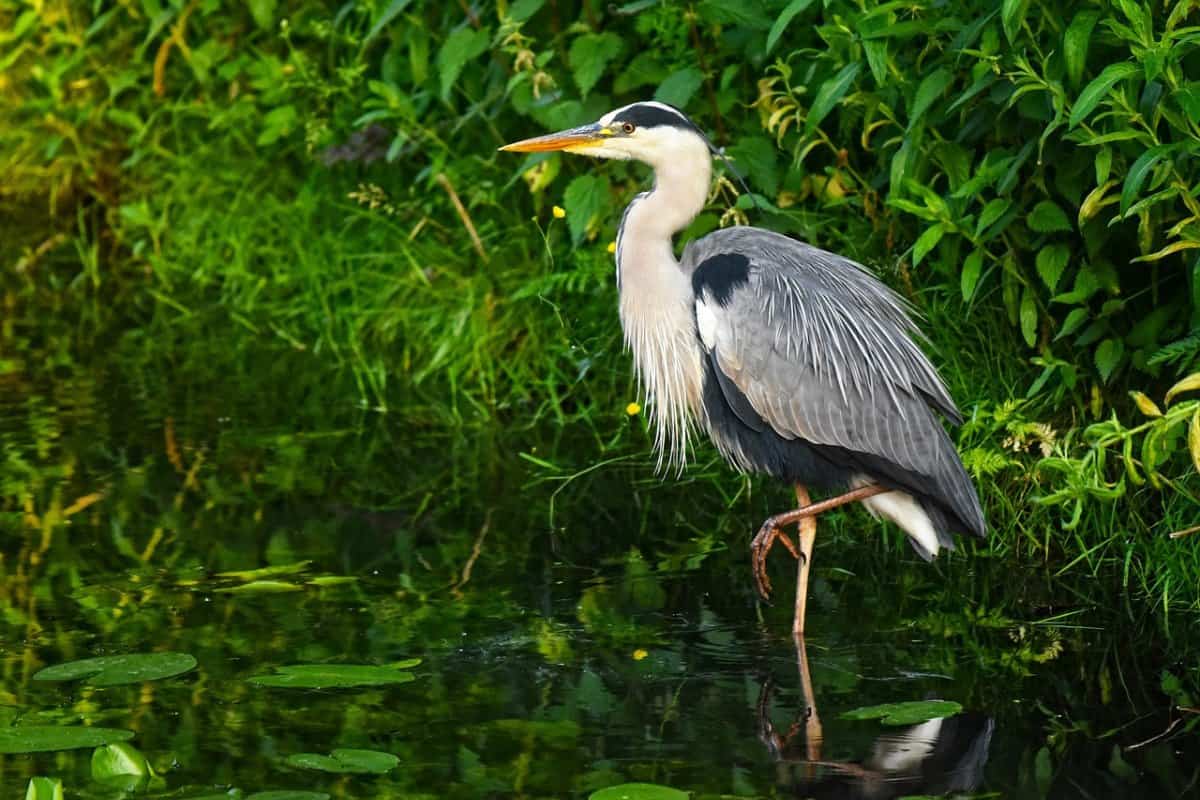Common Name: Gray Heron
Scientific Name: (Ardea cinerea)| Size | Diet | Range in Hawaii | Status in Hawaii |
|---|---|---|---|
| 36 in. - 39 in. | fish, amphibians, insects and crustaceans | Northwestern Hawaiian Islands | Least Concern |
The Gray Heron, also known as Ardea cinerea, is a wading bird species that is native to Europe, Asia, and Africa. While the species is not native to Hawaii, it has been known to make occasional appearances on the islands as a non-breeding visitor and vagrant. With its striking appearance and unique behavior, the Gray Heron is a fascinating bird species that has captured the attention of birdwatchers and avian enthusiasts around the world.
In this article, we will explore the world of the Gray Heron, its unique characteristics, and its occasional presence in Hawaii.
Gray Heron
Appearance

The Gray Heron stands as an elegant embodiment of nature’s grace. With its statuesque demeanor, it reaches an impressive height of around 36 to 39 inches (91 to 99 cm). Cloaked in an ash-grey plumage, the heron carries an air of refined mystique.
Its long, slender neck arcs with elegance, leading to a dagger-like bill designed for precision hunting. When in flight, its expansive wings, spanning up to 63 inches (160 cm), unveil a striking silhouette against the sky.
Diet
The Gray Heron is a consummate hunter with a diverse and intriguing diet. Its menu includes an eclectic mix of aquatic creatures, from fish and amphibians to insects and crustaceans.
Nesting
The Gray Heron is a master architect of the avian world, creating its nests with precision and elegance. Building upon a foundation of sticks, reeds, and grasses, the Gray Heron constructs a platform-like nest that seems to defy gravity atop tall trees or even amidst thick reed beds.
What makes the Gray Heron’s nesting technique truly intriguing is its ability to blend practicality with aesthetics. The heron meticulously weaves together materials to form a spacious bowl-shaped nest that provides a comfortable dwelling for its future offspring. As if embracing an interior decorator’s touch, the heron often lines the interior with soft materials like feathers to ensure a cozy and secure environment for its fledglings.
These avian architects demonstrate a flair for strategic location selection as well. Nesting high above the ground affords protection against ground predators, while proximity to water sources guarantees an ample food supply for the growing chicks. As the breeding season approaches, observing the Gray Heron’s nesting rituals becomes a captivating spectacle, revealing the harmonious blend of nature’s creativity and survival instinct.
Behavior

One of the most captivating behaviors of the Gray Heron is its stealthy hunting technique. Wading silently in shallow waters, it freezes like a living sculpture, patiently awaiting the ideal moment to strike.
Suddenly, its lightning-quick beak darts forward, spearing an unsuspecting fish or amphibian. This display of patience followed by an explosive burst of action showcases the heron’s mastery over its surroundings.
Equally fascinating is the Gray Heron’s aerial prowess. With graceful wingbeats, it soars above wetlands, often seeking new hunting grounds or returning to its nesting site. Its wide wingspan and slow, deliberate flight evoke a sense of grace and elegance that belies the power hidden within its avian form.
Another intriguing aspect of the Gray Heron’s behavior is its communal nature. During the nesting season, these birds often congregate in rookeries, creating a bustling avian neighborhood. Despite their quiet and solitary hunting habits, these gatherings provide a sense of camaraderie and shared space, underscoring the complex social dynamics of the species.
Habitat

The Gray Heron finds its haven in wetland realms, from tranquil lakes to lush marshes. With patience bordering on meditation, it stands sentinel by water’s edge, its gray plumage harmonizing with reeds. Breeding in communal rookeries, this solitary hunter reveals the wetlands’ serene solitude and vibrant spectacle in one elegant habitat.
Range
The Gray Heron ventures as a non-breeding visitor and vagrant in Hawaii. The Northwestern Hawaiian Islands hosted the first confirmed record of the Gray Heron, with two individuals spotted on Kure. Additional sightings near Ni’ihau and on Tern Island hint at the species’ potential presence during spring migration, contributing to the intriguing diversity of Hawaiian avifauna.
Conservation Status
The Gray Heron (Ardea cinerea) is classified as a species of “Least Concern” by the International Union for Conservation of Nature (IUCN). This designation reflects the species’ relatively widespread distribution and stable population trend.
Interesting Facts
1. Cultural symbolism
In many cultures, herons are associated with grace, patience, and wisdom. They appear in folklore, art, and literature as symbols of introspection and tranquility.
2. Ancient depictions
The Gray Heron has been depicted in ancient Egyptian hieroglyphs and artwork, often associated with concepts of regeneration and creation due to their presence around water bodies.
3. Hybridization
Occasionally, Gray Herons hybridize with other heron species, resulting in unique crossbreeds. These hybrids can sometimes be challenging to identify due to their mixed traits.
4. Symbiotic relationships
In some cases, Gray Herons engage in symbiotic relationships with other animals. They have been observed foraging alongside cattle or other large herbivores, capitalizing on the insects disturbed by the grazers’ movements.
5. Wing signals
Gray Herons use specific wing positions as communication signals. For example, a raised and arched wing can indicate aggression or an attempt to establish dominance.
Frequently Asked Questions
1. How long do Gray Herons live in the wild?
Gray Herons can live up to 5 to 15 years in the wild. However, some individuals, especially those in protected areas or with less human disturbance, can live longer.
2. How do Gray Herons interact with humans in urban areas?
In urban environments, Gray Herons may become accustomed to human presence and can be seen foraging near fishing spots or even in parks. They might also incorporate human-made materials into their nests, like plastic or discarded items.
3. How do Gray Herons maintain their feathers for flight?
Gray Herons engage in preening, a process where they use their beaks to distribute oil from a gland near the base of their tails onto their feathers. This oil helps waterproof and condition the feathers, enabling effective flight.
4. How can people help protect Gray Herons and their habitats?
Individuals can contribute to Gray Heron conservation by supporting wetland conservation projects, advocating for habitat preservation, reducing pollution in water bodies, and respecting nesting sites to minimize disturbances.
5. What do Gray Heron chicks look like?
Gray Heron chicks are born with downy feathers that are typically white or light gray. As they mature, they develop the characteristic gray plumage of adult herons.




